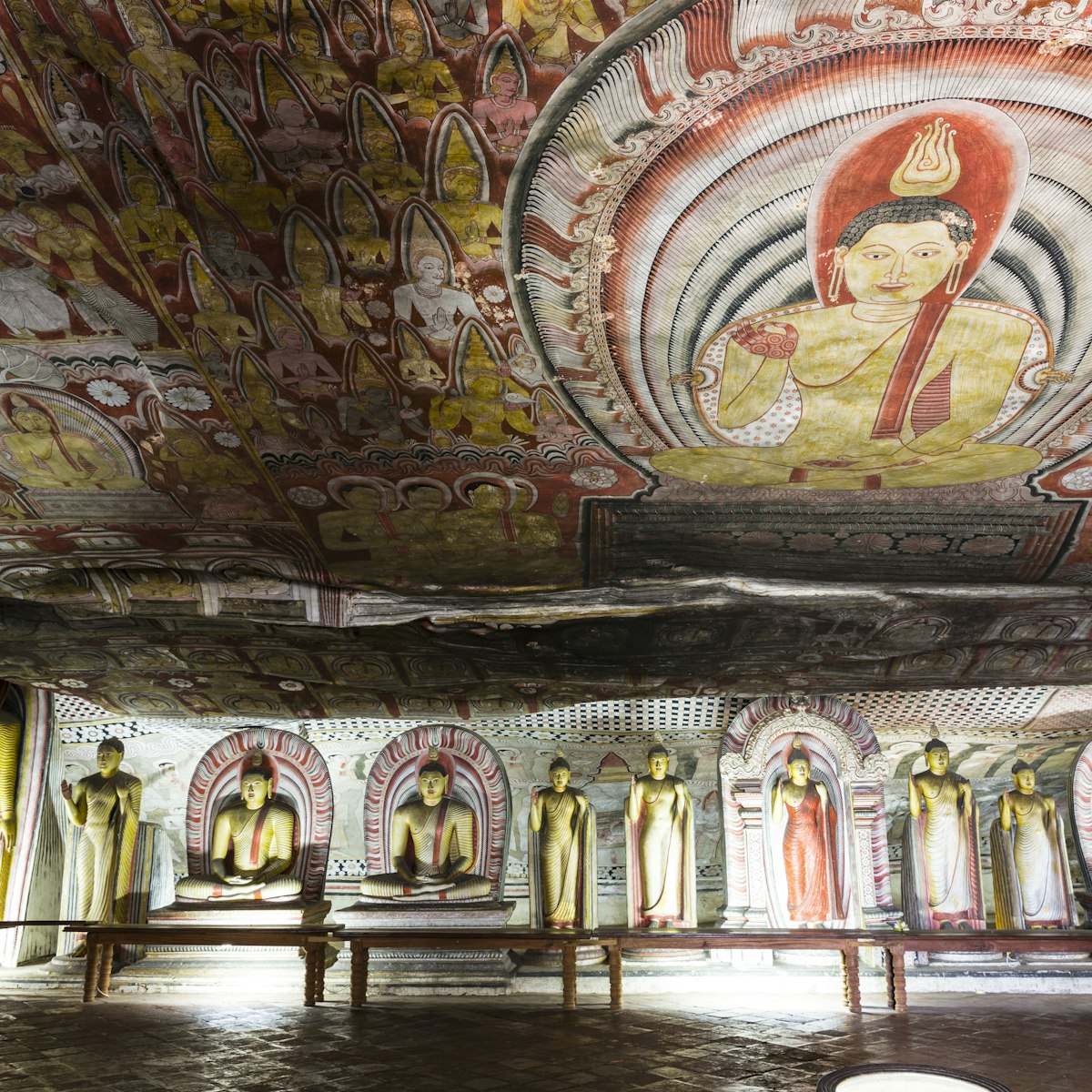Polonnaruwa's northern road ends at Tivanka Image House. Tivanka means ‘thrice bent’, and refers to the fact that the Buddha image within is in a three-curve position normally reserved for female statues. The building is notable for its fine frescoes depicting Buddha in his past lives – the only Polonnaruwa murals to have survived (photos not allowed). Some of these date from a later attempt by Parakramabahu III to restore Polonnaruwa, but others are much older.
Lonely Planet's must-see attractions

0.88 MILES
Part of Parakramabahu I’s northern monastery, Gal Vihara is a group of beautiful Buddha images that probably marks the high point of Sinhalese rock…

25.88 MILES
The beautiful Royal Rock Temple complex sits about 160m above the road in the southern part of Dambulla. Five separate caves contain about 150 absolutely…

16.93 MILES
The spectacular terraced summit of the rock covers 1.6 hectares. This is thought to be the site chosen by King Kasyapa for his fortified capital after he…

1.16 MILES
One of the most evocative structures in Polonnaruwa, the Lankatilaka temple was built by Parakramabahu I and later restored by Vijayabahu IV. This massive…

2.07 MILES
A short stroll north of the Royal Palace ruins, the area known as the Quadrangle is literally that – a compact group of ruins in a raised-up area bounded…

16.98 MILES
Halfway up the Sigiriya rock an open-air spiral stairway leads to a long, sheltered gallery in the sheer rock face. The paintings of the buxom, wasp…

1.41 MILES
The 54m Rankot Vihara dagoba, the largest in Polonnaruwa and the fourth largest on the island, has been ascribed to the reign of King Nissanka Malla. Like…

16.84 MILES
This prominent rock about 1km north of the Sigiriya site, offers amazing views of Sigiriya from its wide summit. It's a 20-minute hike up to the top, past…
Nearby Polonnaruwa attractions
0.29 MILES
A track to the left from the northern stretch of road leads to unusual Nelum Pokuna (Lotus Pond), nearly 8m in diameter, which has five concentric,…
0.64 MILES
King Parakramabahu I planned this 12th-century stupa to be the world's largest Buddhist monument, but even with the enforced assistance of Tamil prisoners…
0.88 MILES
Part of Parakramabahu I’s northern monastery, Gal Vihara is a group of beautiful Buddha images that probably marks the high point of Sinhalese rock…
1.08 MILES
Construction of the dagoba Kiri Vihara is credited to Subhadra, King Parakramabahu I’s queen. Originally known as the Rupavati Chetiya, the present name…
1.16 MILES
One of the most evocative structures in Polonnaruwa, the Lankatilaka temple was built by Parakramabahu I and later restored by Vijayabahu IV. This massive…
1.2 MILES
Set on a natural ridge, this was the monastery’s convocation hall, where monks met fortnightly. This building features a fine mandapaya (raised platform…
1.3 MILES
This minor Hindu site is outside the main archaeological area and can easily be skipped.